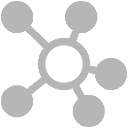
Product Description
Crenolanib is a potent and selective inhibitor of PDGFRα/β, FLT3 with Kd of 2.1 nM/3.2 nM, 0.74 nM, respectively, sensitive to D842V mutation not V561D mutation, and > 100-fold more selective for PDGFR than c-Kit, VEGFR-2, TIE-2, FGFR-2, EGFR, erbB2, and Src.
IC50 & Target: Kd: 2.1 nM (PDGFRα), 3.2 nM (PDGFRβ), 0.74 nM (FLT3)
In Vitro: Crenolanib has 25-fold more affinity for PDGFRA/B compared with KIT, and is approximately 135-fold more potent than imatinib for inhibiting the PDGFRA D842V mutation. The IC50 for crenolanib for a KIT exon 11 deletion mutant kinase is greater than 1,000 versus 8 nM for imatinib. Crenolanib has low nanomolar potency against the V561D + D842V-mutant kinase that is similar to its potency against the isolated D842V mutation. Both imatinib and crenolanib potently inhibit the kinase activity of the fusion oncogene with IC50 values of 1 and 21 nM, respectively, and inhibits PDGFRA activation in this cell line with IC50 values of 93 and 26 nM, respectively[1]. HL60/VCR and K562/ABCB1 cells, overexpressing ABCB1, are 6.9- and 3.6-fold resistant to crenolanib, respectively, in relation to parental HL60 and K562 cells. PSC-833 fully reverses resistance to crenolanib in both HL60/VCR and K562/ABCB1 cells. Crenolanib (1 nM-10 μM) stimulates ABCB1 ATPase activity in a concentration-dependent manner. Crenolanib treatment does not increase the cell surface expression of ABCB1. Crenolanib inhibits [125I]-IAAP photocrosslinking of ABCB1 at high concentrations, with 50 % inhibition at 10 μM, but has little effect at lower concentrations, below 1 μM[2]. Crenolanib decreases NSCLC cell viability, induces apoptosis in NSCLC cells, and inhibits cell migration in NSCLC cells[3].
In Vivo: Crenolanib (10 mg/kg and 20 mg/kg) suppresses non-small-cell lung cancer tumor growth in vivo and induces tumor cell apoptosis, and the dosage of crenolanib applied is well tolerated by recipient mice[3].

Information
CAS No670220-88-9
FormulaC26H29N5O2
Clinical Informationclinicalinformation
PathwayProtein Tyrosine Kinase/RTK
Autophagy
TargetPDGFR
Autophagy